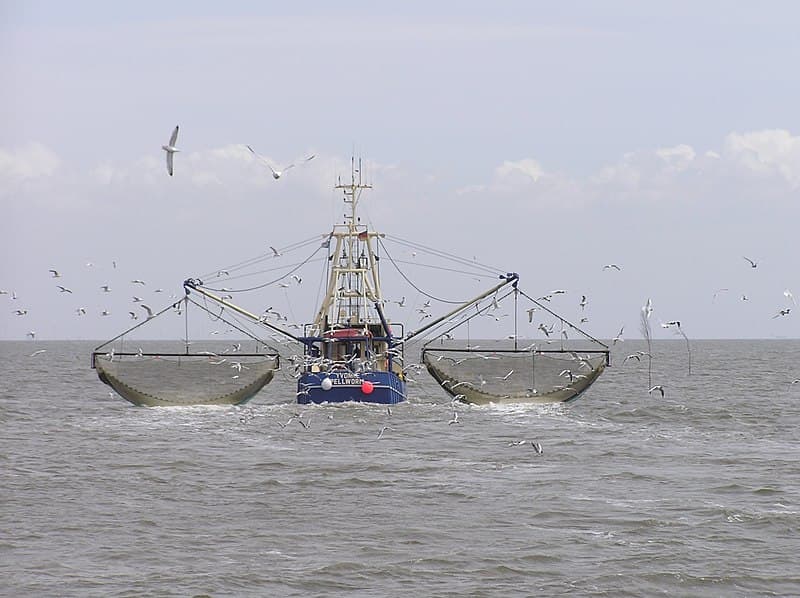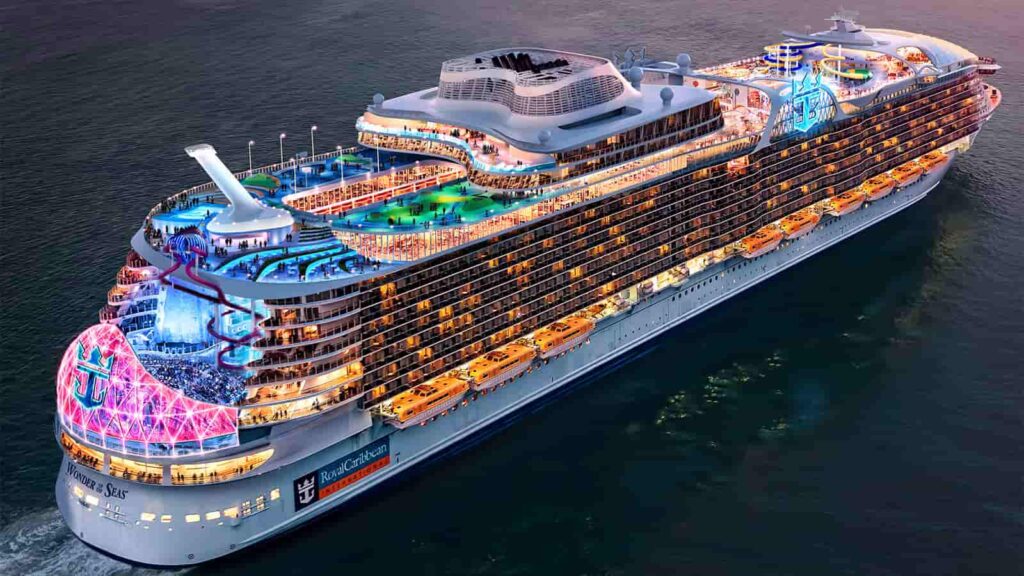Fishing Vessels: A fishing vessel is a boat or ship that is used to catch fish (Piscary) in a lake, sea, or river. Freshwater or deep-sea fishing are two types of fishing.
While freshwater fishing calls for smaller boats, deep-sea fishing demands larger vessels due to its high output and challenging conditions in the ocean.
Deep-sea fishing is difficult since it requires navigating the complexities and unpredictabilities of the ocean in order to catch the right kind of fish.
A variety of fishing vessels are employed for different reasons, and they are divided into three groups based on the function they perform:
- Commercial fishing vessels,
- Artisanal fishing vessels, and
- Recreational fishing vessels.
Fishing boats, sometimes known as industrial fishing boats, are those used to harvest fish and other seafood, usually from wild fisheries, for financial gain.
A significant portion of the world’s food supply comes from commercial fishing, which is accomplished with the assistance of deep-sea fishing vessels and is a challenging task given the unpredictability of enormous oceans.
Often referred to as traditional or subsistence fishing boats, artisanal fishing boats are a variety of small, privately owned, low-tech vessels that are used for fishing. Because they provide local seafood, they pose a serious threat to commercial fishing vessels by lowering their revenue.
Recreational fishing boats are those that are used for fishing for pleasure and entertainment rather than just for fishing purposes. These vessels could be modest or quite large in size.
Fishing boats are essential to marine activities. They are so important to the fishing sector’s ability to balance supply and demand that, in their absence, a very basic but equally important activity would come to a complete halt.
Like any other sector, the field of fishing boats has also seen the adoption of a number of evolutionary approaches over time.
There are currently many different kinds of fishing boats operating in the marine business, and each has a distinct purpose.
The Background Of Fishing Vessels
Prior to the 1950s standardization, fishing vessel designs differed greatly between regions. Traditional wooden vessels were used, but because of their short lifespan and high maintenance costs, they were rendered obsolete. Instead, safer and more resilient materials are now used in the construction of fishing vessels.
What is Break Bulk Ships: Oldest Type of Cargo Vessels Still in Operation at Sea
The first fishing boats are thought to be rafts and dugout canoes, which were constructed from tree bark, logs, and stones. The Neolithic Period, which occurred between 7000 and 9000 years ago, is whence the oldest boat was found during an excavation in Kuwait. These early boats were not used for long-distance transport since they lacked endurance and performance. Instead, they were designed to float.
Vessels were used exclusively for fishing and hunting at the time. Following these more basic boats, the Egyptians created the first multi-oarsman long and narrow vessels circa 4000 B.C. and made significant developments to create vessels that were considerably quicker, larger, and appropriate for long-distance transport. Several other nations also began creating cutting-edge fishing and trading vessels at the same time.
The drifter that the Dutch invented in the fifteenth century ended up serving as a model for the fishing boats that were later constructed throughout Europe. It was a 20-meter-long fishing vessel that resembled a bus. The British invented dogger in the seventeenth century. Even though they were not much bigger than herring buses, droggers could move tons of fish at once.
The 19th century saw the development of the trawler, the modern fishing vessel, at Brixham Harbour. It was created by altering the dogger that was created in the 17th century; Brixham, the “Mother of Deep-Sea Fisheries,” was given credit for its invention. This was the first time that ocean fishing was feasible, and the concept began to spread over the globe.
As time went on, the development reached a tipping point for fishing vessels with the invention of steam.
When the vessel was finally constructed, its steel hulls propelled it forward using steam. The stern trawlers and technologically aided commercial fishing vessels that we employ today are the products of their subsequent development. Technology is still developing at the same time as development.
Classification of Fishing Crafts
Trawler
One of the most widely used types of fishing vessels is the trawler. As the name implies, these boats are equipped with trawler nets, which are trailed beneath the water’s surface at the necessary depth to pull and capture fish. The nets are suspended by assistance equipment.
Trawlers are used in practically every nation on Earth to harvest a diverse range of fish.
Trawlers are typically employed for small-scale fishing, while they can occasionally be utilized for deep-sea fishing. Fishing nets are hung from poles, which draw the net down to a predetermined depth. The nylon used to build the net gives it elasticity and prevents it from becoming hard.
Crane Vessels: Essential Seagoing Ships for High Seas Construction
To enable the net to be dragged to the sea floor and gather as many fish as possible, the bottom of the nets is linked by a hefty chain. If a large load becomes trapped at the net bottom, more power needs to be used.
The drum has a winch crab configuration so that these nets may be conveniently wrapped around it when not in use.
These trawlers are separated even further into two groups: Stern and Cutter.
These trawlers have automated refrigeration systems, and the amount of labor required determines the engine power of the trawlers.
A refrigeration system keeps the captured fish at its ideal temperature. Certain cutting-edge, contemporary trawlers are equipped with onboard fish processing systems that send fish straight to markets as soon as they arrive at the port.
Non-trawling Vessels

These are very productive fishing boats with nets that fish swim to and get entangled in rather of having the nets dragged against the ocean’s surface. One kilometer may be the length of these nets.
The following categories apply to these non-trawling vessels:
Seiners
The purpose of these non-trawling vessels is usually to capture fish. Fish species that live close to the water’s surface are known as pelagic species. These kinds of fishing boats use seine nets. When a shoal of fish enters one of these nets, traps attached to the net seal it from underneath. In some seiners, there is a bow thruster that allows the vessel to turn loops around the shoal.
The seine fishing nets appear to be large floating objects at first, but as soon as the fish are inside the net, the lower part of the net shuts, effectively capturing the fish.
Modern technical devices let these fishing boats achieve large returns on their catches.
Longliners
Longliners are boats that have several long fishing lines strung together in series, with hundreds of baited hooks connecting each line.
Snoods are the name for the branch line that fastens these hooks to the fishing lines. The size of the ship, the number of crew members, and the automation system determine the quantity of fishing lines that must be carried aboard a vessel.
But the main distinction between trollers and longliners is that, although the latter use multiple fishing lines, longliner vessels use essentially one very long fishing line with about a thousand lures on it.
The fishing line is lowered from the rear of the boat, and automatic mechanisms assist in maintaining the boat’s position while spooling the fish for eventual storage.
Tuna clippers are automated fishing boats that have a unique platform with poles and lines on them. To catch tuna, which are saltwater fish, these lines are further attached with live bait.
When tuna is caught, an automated swinging mechanism fitted to tuna cutters swings the fish into tanks. It is mandatory for fishermen to release the hook when capturing large-sized tuna.
Gillneters: Gillneters are the different types of fishing vessels that use the gill net method of fishing. Gillnetters can be manually or technologically powered for better fishing.
Generally speaking, larger fisheries operations use the gillnetting technique, whereas relatively small-scale fishing operations use the former.
Crabbers: Crabbers are fishing vessels that are primarily and extensively used for catching crabs. Since these boats include special entrapping tools for catching crustaceans, they are also sometimes referred to as “fish trap” boats.
These boats are outfitted with automated windlasses so they can haul these trapping aids along with the catch.
Drifters: A drifter is a fishing boat that uses specialized drift fishing nets to catch and haul fish.
Fishing boats known as drifters utilize specialized drift fishing nets, or nets that fall into the water like long curtains, to drag and capture fish.
The nets were mostly used to catch herring fish since they dropped into the water like draperies.
Factory Ship: A floating factory at sea for processing, preservation, and fishing is what a factory ship is like.
Crabbers are the fishing boats that are typically used to catch primarily crabs. Another name for these fishing boats is fish trap boats.
The manufacturing ship completes all of the tasks after bringing the fish to shore. Study up on the industrial ship.
Most fishing vessels on the list have multiple subclassifications under their general heading and are designed to target certain types of fish. The mercantile-based fisheries sector widely uses these fishing boats to meet demands, rather than just for small-scale operations.
Market Data For Fishing Boats

In 2016, there were 4.6 million fishing boats worldwide, with Asian countries holding the largest fleets. In 2016, Asia alone owned 3.5 million vessels, nearly 75% of all global fleets, an increase from 2014.
While North America and Africa lost strength, Latin America and the Caribbean and Asian fleets grew. As recreational and commercial vessels, fishing boats range in size from dinghies (small) to charter cruise ships (large).
An estimated 2.8 million engine-powered vessels were in the world in the fishing year 2016. From 64% of all fishing vessels in 2014 to 61% in 2016, the proportion of powered vessels fell.
Asia owns the majority (roughly 80%) of the world’s motorized fleets, with 2.2 million vessels, followed by Africa with 153000. Europe has the largest fleet of motorized ships, but its size has steadily declined since 2000.
Essential Role of Supramax Cargo Vessels in the Trillion-Dollar Global Shipping Industry
Conclusion Regarding Fishing Vessels’ Future
In the nation, the fishing industry alone employs 1.5 crore people. China produces far more fish than India combined, with a share of 69%. India’s share is just 4.2%. In order to sustain Indian fishing vessels’ proportion of the world’s fish production, we must modernize them.
Regulations should govern the construction of fishing boats with a focus on sustainable development. The boats should be able to meet both the country’s export and local needs. Fishing boats should be simple to use and have little to no environmental effect. Since fishing is a significant industry that creates jobs, it shouldn’t move offshore due to a lack of fishing vessels. Indian vessels still need certain improvements in their development and manufacture for fishing.


